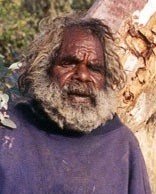JOHNNY WARANGKULA TJUPURRULA
MARKET ANALYSIS

Johnny Warangkula was a powerful presence throughout the formative period of the Desert painting movement and created his most emblematic and important works early in his career. All but one of his top 30 results are for works that were painted in the 1970s and of those more than two thirds were painted in the Bardon period of 1971 to 1972. Of the 312 works offered for sale at auction only 58% have sold, evidence that his paintings were uneven in quality, especially as his career advanced. Of those paintings that have achieved between his 20th and 100th highest prices only about a dozen were painted during the 1980s or later. The artist’s poor clearance rate at auction has been largely due to the false impression amongst collectors that works produced during the 1980s and 1990s are worth more than their actual market value.
There is no doubt that the large number of late-career works he produced did not serve his reputation well. The sole late-career work to enter the top fifty, Pangkalangku Men 2001, sold for $75,000 at Lawson-Menzies in March 2009 (Lot 142). During a year in which six works sold out of ten offered, this sale was the only real anomaly. Late career works by Warangkula are considered a less sure investment relative to the solid blue-chip early works that carry Papunya or Stuart Art Centre provenance.
Warangkula’s brilliant top-selling work Water Dreaming at Kalipinypa 1972, measuring just 75 x 80 cm doubled in value over three years, originally selling for $206,000 and then reselling in Sotheby’s June 2000 auction for $486,500 (Lot 70). Yet only nine of his works have sold for more than $100,000 and all but exceptional examples of his early boards have slightly decreased in value during the past ten years.
Amongst these, Wild Tomato Dreaming 1972 sold for $41,400 at Sotheby’s June 2000 auction (Lot 109), showing a drop in $2,300 from its earlier result at Sotheby’s in 1998 (Lot 223) and Water Dreaming 1971 incurred a loss for its owner of $8,050 when re-sold at Sotheby’s in June 2000 for $17,250 (Lot 108) after originally being purchased from Sotheby’s in 1996 (Lot 8). Another slightly larger board measuring 91 x 76 cm titled Water and Tucker 1972 was re-offered by Sotheby’s in July 2005 after having failed to sell in an earlier auction. Sotheby’s halved the estimate and it still failed to sell. This is evident even amongst those works in the lower price range. A late 1970s work Kalipinypa 1978 failed to reach its lower reserve of $6,000 in Lawson~Menzies October 2003 sale after realising $6,325 at Deutscher-Menzies in June 1999 (Lot 161).
The majority of Warangkula’s works are heavily weighted in the $10,000 to $25,000 price range. His highest price for a work on canvas was $342,250, which was paid for a 173 x 203 cm work Spearing of Matingpilangu 1974 at Sotheby’s in July 2003 (Lot 184).
Warangkula’s works first appeared at auction in 1993, and by 2000, 48 of 60 works had sold for an 80% clearance rate. Between 2000 and 2012 however, his success rate dropped to as low as 38% (2008) resulting in his overall career standing at 58%. Though 7 of 9 works on offer in 2015 sold at an average price of $21,320, he was the 18th most successful artist in a year during which one lovely early board Water Dreaming with Bush Tucker, 1972, entered his top ten results in 10th place. 2016 told a slightly better story. In that year 9 of 11 works sold for a clearance rate of 82%. With prices averaging $16,820 he was the 13th most successful artist that year. Indicative of the dichotomoy of his career, of the 4 works on offer in 2017, the two that sold (for an average price of $48,630) were from 1971 and 1973, while the works that failed were dated in 1990 and 1998. Warangkula’s best years occur when one or two major works are on offer. In 2019, though only 8 works sold of 14 on offer (57% clearance) he finished 6th most successful artist for the year on the back of a very good 1973 work which appeared in Sotheby's first New York Aboriginal art sale. Estimated at USD100,000-150,000, Camp at Walungurru – Dingo Camp At Tinki, measuring 122 x 91 cm sold for US$162,500 ($AUD235,446), the artist’s 3rd highest price ever. In fact, Sotheby’s have been the powerhouse and champions of Warangkula’s sales, having offered 123 paintings of the 312 that have appeared for sale. Lawson-Menzies is a distant second with 31 works.
Overall, collectors should be aware that Johnny Warangkula’s early works painted during the period that Bardon was in Papunya between 1971 and 1972 are far and away the most highly sought-after and splendid examples of his work. While he continued to produce intensely detailed, finely wrought paintings for a few more years, over time, they became less intricate, more gestural and finally more and more messy and muddy in colour as his sight and dexterity became impaired. Because of the high prices his early work fetched on the secondary market during the mid to late 1990s many independent traders supplied him with rolls of canvas, only to end up with unsaleable works in all but a few exceptional cases. That Warangkula earned far more from these than he ever did from his finest works is the ultimate irony in a career that has left a lasting legacy on both counts.
© Adrian Newstead

